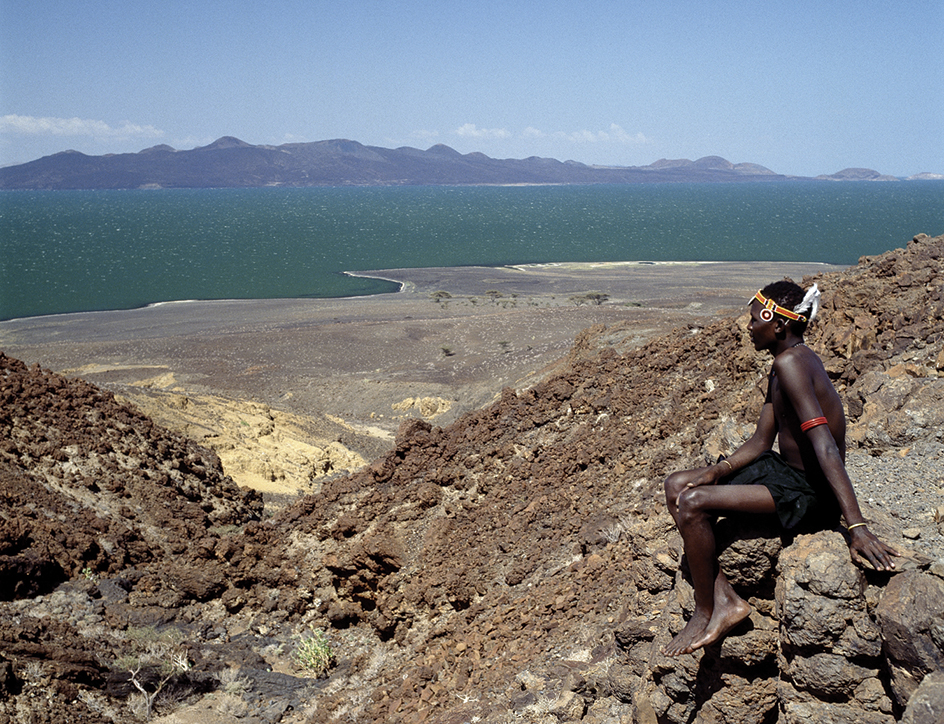Turkana << tur KAN uh >> are a people of East Africa. The Turkana live in a harsh desert environment in northwestern Kenya between Sudan, Uganda, and Lake Turkana. Today, there are about 300,000 Turkana living in Kenya, where they make up one of the largest pastoral (livestock-herding) groups in the country.
The Turkana do not have any centralized political organization. They usually live in small, widely scattered homesteads consisting of a married man, his wives, and children. They herd cattle, goats, sheep, donkeys, and camels over large distances in search of water and pasture. Some Turkana live along rivers or near Lake Turkana, where they fish, grow millet and corn, and keep livestock.

The Turkana believe in a supreme God called Akuj << AHK ooj >>, who lives in the sky and is kind to human beings. Akuj is represented on earth by diviners who reveal events to human beings, make rain, and treat illnesses. According to Turkana tradition, some illness is caused by sorcery.
Turkana men wear their hair in large, round mud-plaited hives on the back of their heads. They often paint their hair blue. They also wear many earrings and a lip plug under their lip. Women and girls shave their heads at the sides and keep their hair long in long ringlets.
Turkana men are initiated as warriors when they are teenagers. The Turkana have a long history of raiding against neighboring tribes, and they resisted British colonial rule in the early 1900’s. The Turkana suffered severe famine in 1980 and during the 1990’s. Since then, many Turkana have settled near famine-relief camps, though most continue to live the traditional pastoral lifestyle.
